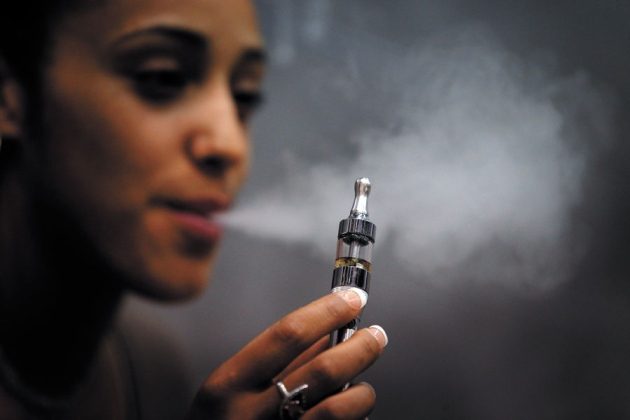Dr. Denise Hooks-Anderson
by Dr. Denise Hooks-Anderson
If you know anything about teenagers and young adults, you recognize that they desire to be “cool,” “fly,” “dope,” “on fleek,” “dank” or any other word associated up to date and on point. What is the latest fashion or tennis shoe: Adidas vs. Vans? Or is it the tight and skinny ankle-length pants that men are wearing without socks? Whatever the newest trend, you can be assured that Millennials and Generation Z young people want to be a part of it.
For that reason alone we should all be concerned about the dramatic increase in vaping among youth. The use of electronic cigarettes has seen a dramatic rise among youth and young adults. From 2017 to 2018 there was nearly an 80 percent increase in vaping among high school students and nearly 50 percent increase in middle school students.
The Family Smoking Prevention and Tobacco Control Act gave the FDA the authority to regulate tobacco products, including cigarettes, cigarette tobacco, roll-your-own tobacco, and smokeless tobacco in 2009. The sale of flavored cigarettes except for menthol was also banned. Interestingly enough, menthol cigarettes are most commonly used by blacks. Less than 30 percent of white smokers use mentholated cigarettes as compared to over 80 percent of African Americans. Tobacco companies have historically targeted Black and Hispanic communities.

Tobacco companies have been targeting youth with a variety of flavorings because they know that is what attracts this new generation of users. Young adults erroneously believe that hookah is a safe alternative to cigarettes and is a smoother experience due to the flavorings and the way they smoke the product.
Currently, there are over 15,000 different e-cigarette flavors on the market, such as bubble gum, chocolate, and mint. However, these products are far from benign. Studies have found that short-term exposure to inhaled flavorings in vaping products can have damaging effects on the regulation of blood vessel function due to their effects on endothelial cells which is a risk factor for cardiovascular disease.
As of October 15, per the Centers for Disease Control (CDC), there are 1,479 cases of lung injury illnesses associated with electronic cigarettes. Cases have been reported in the District of Columbia, one U.S. territory, and all states except Alaska. Sadly, 33 deaths have been confirmed in 24 states.
Unfortunately, the specific cause of these injuries is unknown but all of the patients reported some type of e-cigarette use. So far, tetrahydrocannibinol or THC has been found in most of the samples tested by the FDA. Many of these THC-containing products were obtained from other sources: family, friends, and illicit sources.
Because current information is still limited and the investigation is not complete, the CDC recommends that individuals consider refraining from all vaping products. The use of e-cigarettes is unsafe for everyone, not just young people. Furthermore, these products contain nicotine, and prior research has shown that nicotine is a harmful, addictive substance.
Lastly, the American Heart Association advocates for the banning of all flavors from tobacco products. Curbing usage has been challenging since the devices used for e-cigarettes can be quite deceptive in appearance, often mimicking a key fob or a USB drive. This disguise makes it difficult for teachers and parents to intervene. Therefore, it is imperative to have a conversation with teens before they initiate vaping as a pastime.
Denise Hooks-Anderson, M.D., FAAFP, is associate professor at SLUCare Family Medicine and the medical accuracy editor of The St. Louis American. Email yourhealthmatters@stlamerican.com.